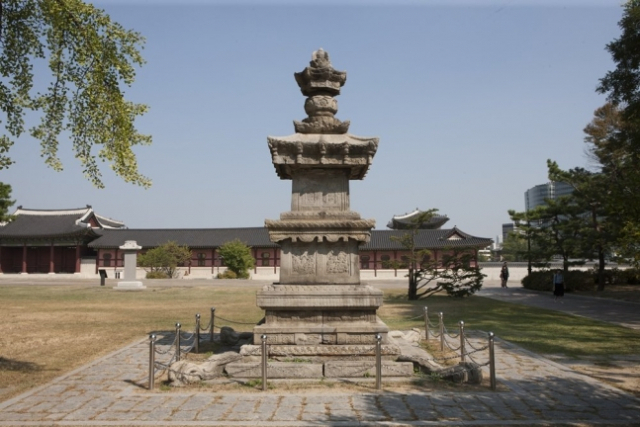Wonju Beopcheonsaji Jigwangguksa tower, 5 years preservation work completed… Publication of restoration process and research results report
 viewer
viewer
National Treasure No. 101, one of the highlights of the seungtap during the Goryeo Dynasty, the Jigwangguksa pagoda at Beopcheonsaji Temple in Wonju completed the preservation process and returned to his hometown, Wonju, Gangwon-do.
The Cultural Heritage Administration’s National Center for Cultural Heritage Conservation Science announced on the 20th that it has completed the preservation treatment of Jigwangguk Leaning Tower over five years since 2016.
Wonju Beopcheonsaji Jigwangguksa Tower is the most unique and colorful pagoda ever built with the unique structure, splendid sculpture, and outstanding majestic decoration of the Goryeo Dynasty, which was built in Beopcheonsa, Buron-myeon, Gangwon-do. Be evaluated.
In 1911, during the Japanese colonial period, it was moved from Wonju to Seoul by the Japanese, and then returned to Osaka, Japan about 10 times, and during the Korean War, it was bombed and destroyed.
The Jigwangguk Leaning Tower has been confirmed to have been damaged by a number of cracks and mortar (brick bonding agent) restoration sites in two regular surveys, special comprehensive inspections, and precision safety inspections. In addition, concerns for further damage were raised due to structural instability of the roof stone (roof stone) and the upper ring, and in 2015, the entire dismantling and preservation treatment was decided.
 viewer
viewer
Accordingly, the Center for Conservation of Cultural Properties has completely dismantled and preserved the stone pagoda from the following year. During this process, the dismantled members were recorded, the mortar was removed, the fruited members were made of new stone, and the damaged members were bonded. The Cultural Heritage Conservation Science Center explained, “In the case of new stone materials that need to be obtained, we surveyed major stone production sites across the country and quarried them in Wonju, where the Jigwangguk Leaning Tower was located, and they were obtained with the material most similar to the stone used when the tower was built.”
In addition, research was conducted on the basis of glass dry plates and actual drawings to restore the shape of the fruiting part, and it was processed and joined with traditional techniques and tools. The Center for Conservation of Cultural Properties said, “Among the 29 members in total, 19 parts were partially used with new stone materials, such as jadeite stone (roof stone) and anghwa (a sculpture of a flower looking up), and a bo-ring (a member in a circular shape at the top of the tower). He explained that the structural stability was secured by restoring about half of the absence of a new stone material.
 viewer
viewer
In addition, “The fragment of the damaged jadeite stone found in the sari-gong (the hole to put the sari) and the fragment of the lower-level air mass excavated at Beopcheonsaji (a large stone overlaid on the stone) were restored to their original location. “We tried to restore the original shape of the Jigwangguk Leaning Tower, such as correcting the position of the ugly and the defense of the woman.”
 viewer
viewer
On this day, the Center for Conservation of Cultural Heritage published a report on the’Preservation and Restoration of Jigwangguk Leaning Tower III at Beopcheonsaji Temple in Wonju’, containing the latest research results, and released it to the website of the National Institute of Cultural Heritage. The report contains the contents and research of the project from 2018 to 2019, the process of finding new stone materials and inserting them into the tower, research on epic sculptures and patterns, and the process of reinforcing the structure of damaged parts. The Cultural Heritage Conservation Science Center plans to publish information and preservation information related to the Jigwangguk Leaning Tower as a webtoon and release it online from the 22nd.
However, no conclusion has been reached on the location of the restoration before the Jigwangguksa tower. A plan to put it in its original location in Beopcheonsa Temple, a plan to restore a protective angle by erecting it, and a plan to move it to the exhibition hall being built in the temple are facing each other. The Cultural Heritage Conservation Science Center said, “The Cultural Heritage Administration and Wonju will closely discuss to find a way to preserve the cultural properties well.”
 viewer
viewer
/ Reporter Ji Woong-bae [email protected]
< 저작권자 ⓒ 서울경제, 무단 전재 및 재배포 금지 >
